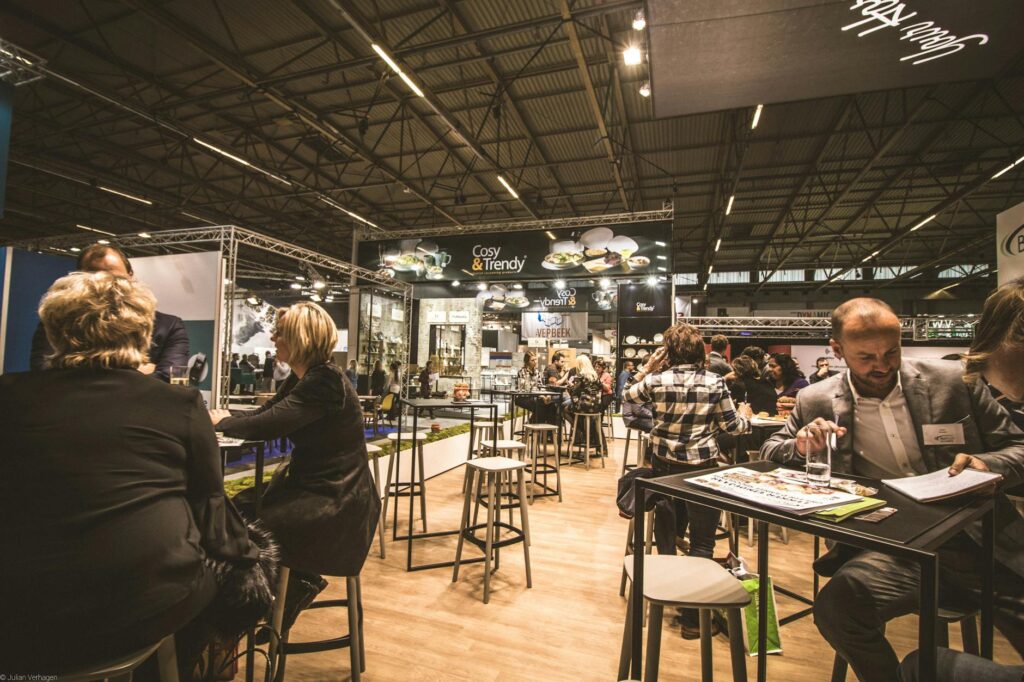Trade events provide unmatched chances to highlight goods, create relationships, and increase market share. To guarantee the best return on investment, however, taking part in these events calls for rigorous financial preparation. From designing a striking exhibition display to handling marketing and logistics, every element has to be carefully allocated. A well-written financial strategy may make all the difference between a trade show increasing brand awareness and one draining resources with little consequence. Success calls for both knowledge of the nuances of trade show budgeting and wise decision-making to allocate resources effectively.
Crafting a Winning Exhibition Booth:
An exhibition booth represents the center of attention for a brand’s presence at a trade show, not just a physical area. Making a lasting impact on guests depends on providing enough funds for the design, construction, and upkeep of an eye-catching exhibit.
Good booth building uses robust materials, creative ideas, and practical layouts that support interaction. While adding interactive displays, product demonstrations, and technological connections, the design has to complement the brand identity. Materials, professional design services, and set-up expenses, among these components, call for some of the money. Investing in modular booth designs may also save money over time and provide adaptability for use at other events.
Maintaining the exhibit during the trade show is equally vital. Contingency budgets for repair kits, extra marketing materials, and on-site technical assistance guarantee seamless running. Businesses that commit money to the care and growth of the booth will create a welcoming environment that attracts partners and potential consumers.
Allocating Resources for Seamless Execution
Any trade show budget mostly consists of logistics, which covers transportation, lodging, and on-site operations. Management of these areas guarantees a stress-free experience and increases attention on networking and advertising by means of precision.
Strategic preparation is needed for moving marketing materials, product samples, and booth elements to the site. The budget has to consider customs clearance, insurance, and freight as well as other factors. Selecting trustworthy shipping partners and planning deliveries far ahead can help reduce risks and save last-minute spending.
Additionally requiring careful thinking are accommodations for team members attending the event. Choosing reasonably priced housing close to the event shortens travel time and increases efficiency. Early reservations and hotel arrangements might benefit from group discounts, helping to reduce total costs. Meal and incidental budgeting guarantees guests are adequately supported all throughout the event. Careful logistics planning helps companies to have a simplified approach to supporting their objectives without overpaying.
Boosting Your Trade Show Attendance
Participation at trade shows depends critically on marketing, which calls for committed money to create awareness before, during, and after the event. Good marketing plans increase brand awareness and foot activity at the booth.
Pre-show marketing initiatives include targeted advertising, email outreach, and interesting social media campaigns. Setting aside money for professional content creation—that is, films, graphics, and blog entries—can greatly improve these initiatives. Investing in attendance list acquisition also helps companies reach important prospects ahead of time, hence facilitating significant trade show contacts.
On-site promotional events like competitions, live product demos, and freebies draw interest and encourage participation throughout the event. Budgeting for branded goods, engaging exhibits, and expert emcees gives spectators something of excitement. Retargeting efforts and tailored emails help to guarantee that contacts formed at the event are developed into enduring relationships in post-show follow-up. Thorough marketing efforts guarantee strong visibility and quantifiable outcomes.
Building an Effective Team for Representation
The success of a brand is often shaped by the people presenting it at a trade show. Staffing budgets call for not just travel and lodging but also training investments to equip team members for the event.
Hiring experienced and charismatic employees guarantees guests get accurate information and a good picture of the business. Allocating money for seminars and training courses improves the capacity of companies depending on current staff to address questions and communicate successfully. Product knowledge briefings and role-playing exercises provide the staff with the tools they need to shine.
Equally vital on-site support personnel are technicians and logistics coordinators. Budgeting for their resources and pay guarantees flawless operations and fast resolution of problems. Businesses that give personnel and training a top priority in the budget will project a professional image that promotes confidence and strengthens relationships.
Conclusion
Strategic budgeting turns trade show attendance into a very effective instrument for corporate expansion. From creating a remarkable exhibition booth to perfecting post-event assessments, every dollar invested with intent increases the visibility and influence of a company. Companies may get amazing outcomes that propel long-term success by approaching trade show planning with a clear financial plan.

